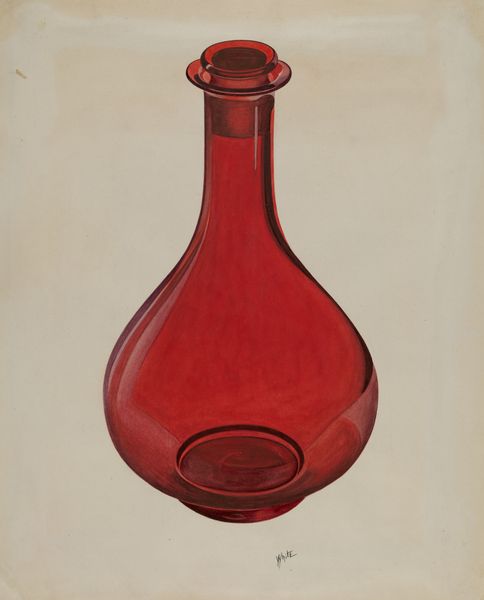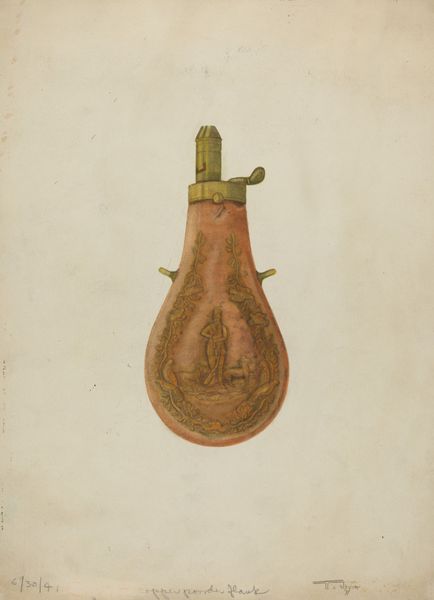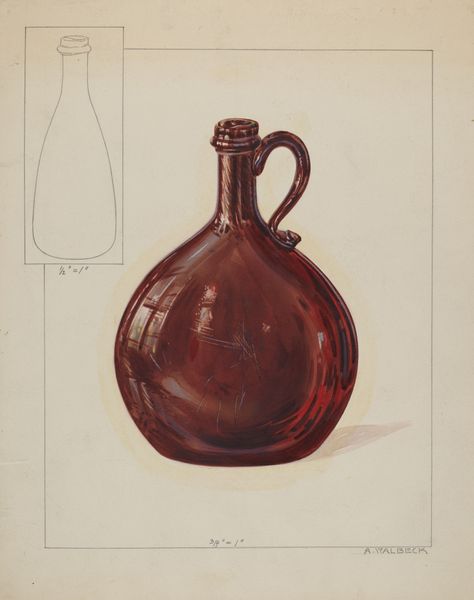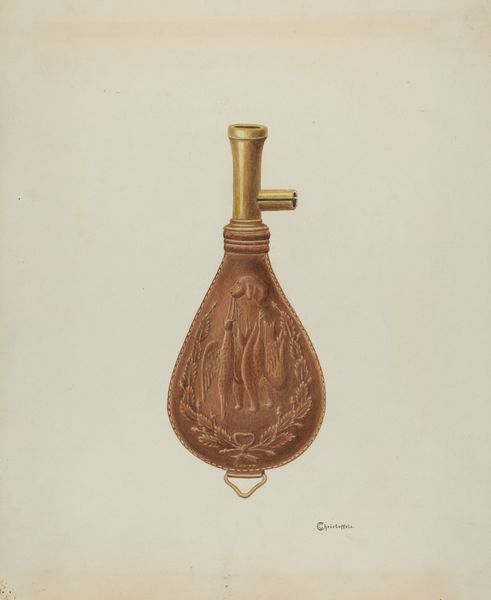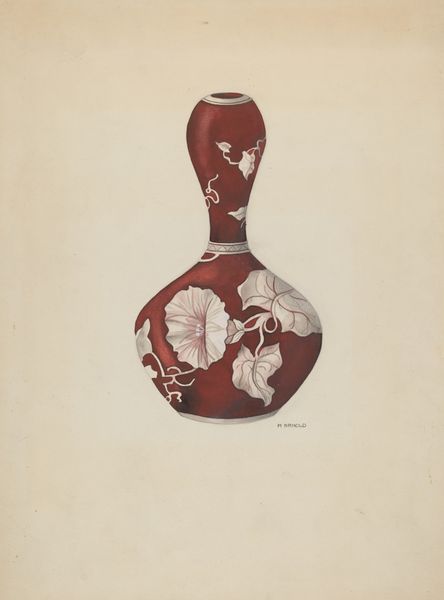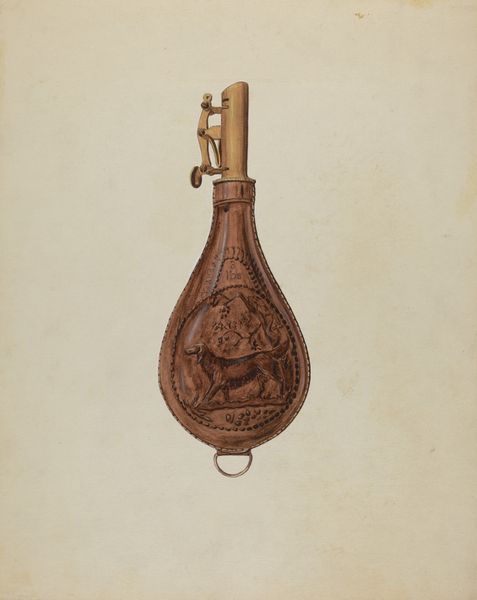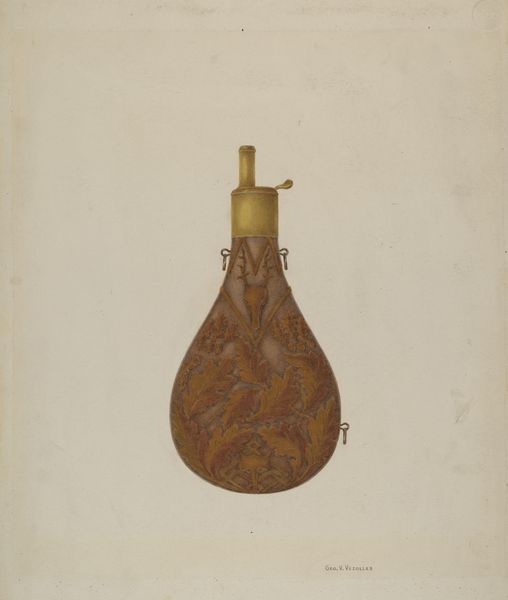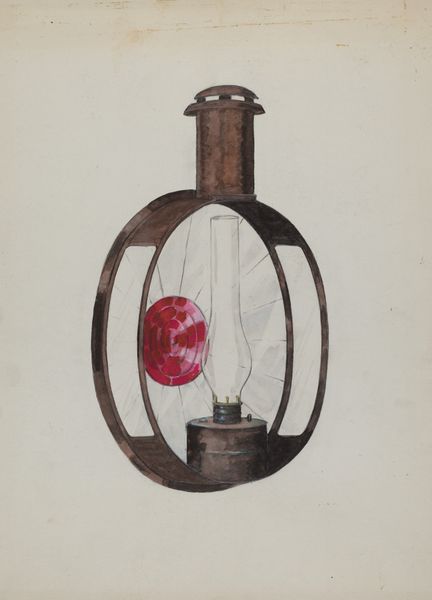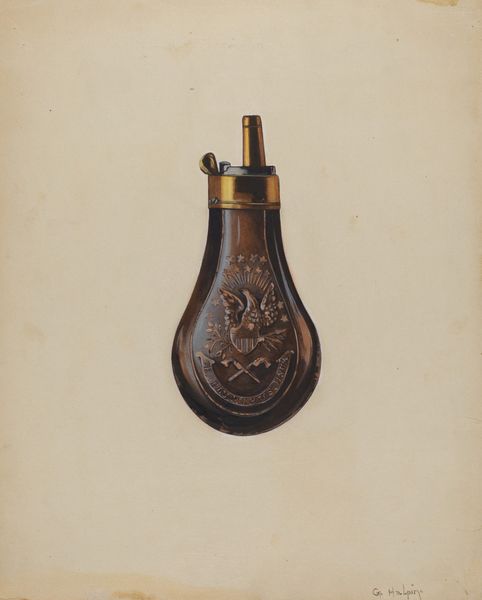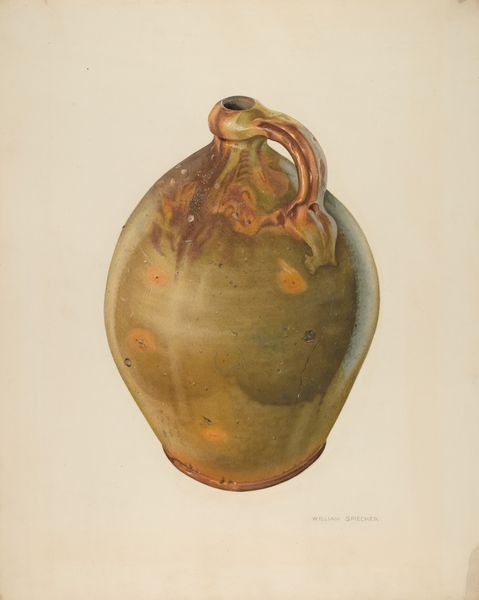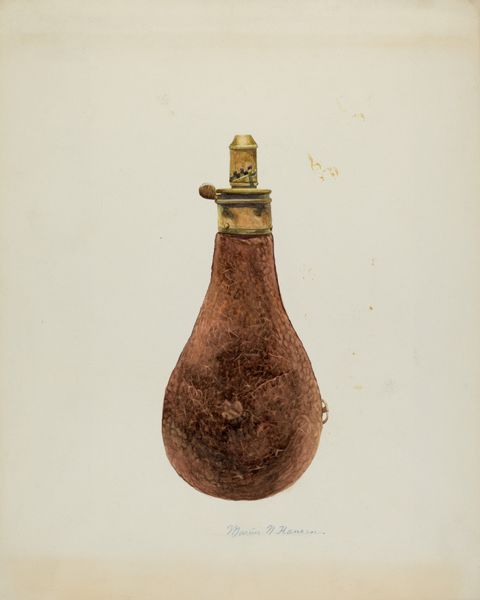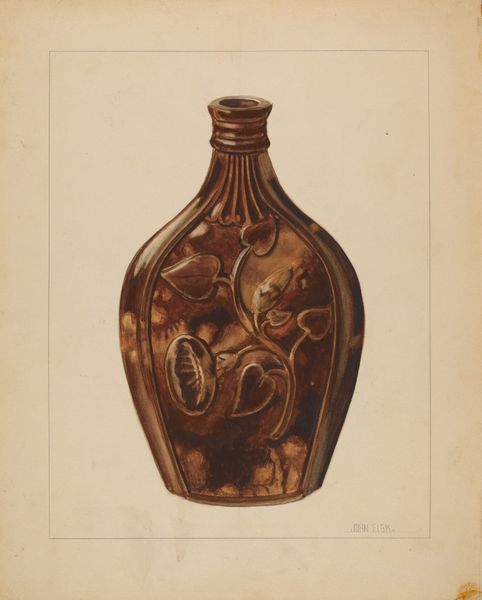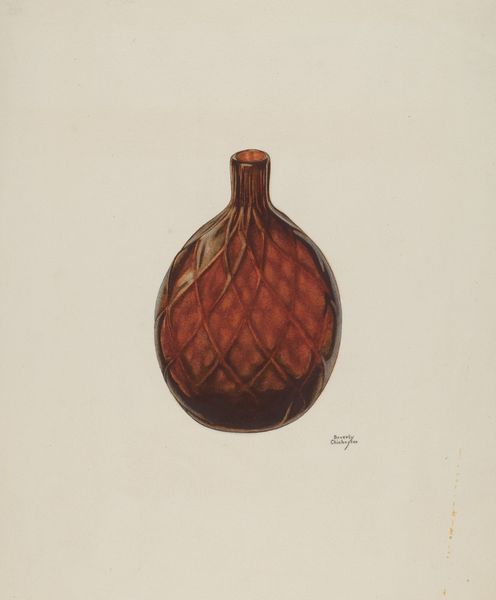
drawing, watercolor
#
drawing
#
watercolor
#
underpainting
#
watercolour illustration
#
modernism
#
watercolor
Dimensions: overall: 30.8 x 23 cm (12 1/8 x 9 1/16 in.)
Copyright: National Gallery of Art: CC0 1.0
Editor: We're looking at "Vinegar and Oil Bottle" by Chris Makrenos, made around 1939, a watercolor and drawing piece. The striking, jewel-toned bottles command attention. I’m curious about the choice of such everyday objects as a subject. What can you tell me about it? Curator: I see here a compelling engagement with the everyday. Notice how Makrenos elevates functional objects. His use of watercolor, a traditionally ‘lower’ art material, applied with evident skill, invites us to reconsider what constitutes worthy subject matter and challenges rigid hierarchies. What do you make of the implied domesticity? Editor: The bottles certainly speak to a domestic space, perhaps a well-appointed dining room. The attention to detail feels almost reverential. But what about the economic context? Was this a period of interest in domestic life and simpler pleasures? Curator: Exactly! Consider the period around 1939; the tail end of the Depression era. Art increasingly focused on the home, on making do, and finding beauty in modest things. Furthermore, the availability and cost of watercolor paints and drawing materials were comparatively accessible, shaping artistic choices. Notice how he highlights craft. What are your thoughts about the surface finish? Editor: I hadn't thought of that. Now that you point it out, there’s a clear emphasis on the translucent nature of glass, and the way light plays on the bottles’ surfaces. The reflective details suggest he considered these items for form as well as function. Curator: Indeed! It reflects a wider artistic shift, valuing the labour and the tangible qualities of production and celebrating the overlooked beauty of utilitarian objects. How do you think our understanding of artistic value might change by considering these pieces? Editor: I’m beginning to see how art can be found everywhere, and in everything. It really is the perspective of the artist that matters! Curator: Precisely. By questioning the materials and modes of production, artists broaden our view of the world, helping us find artistic value and appreciate craftsmanship in the mundane.
Comments
No comments
Be the first to comment and join the conversation on the ultimate creative platform.
